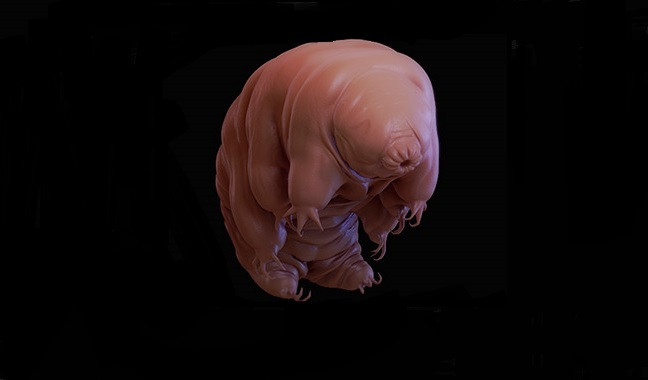Tardigrades are the only animals that would survive the end of the Earth
'Water bears' would live through an asteroid hitting Earth, and survive until the Sun dies.
The almost-indestructible tardigrade may be able to survive on Earth even in the case of catastrophic scenarios, such as a huge asteroid hitting the planet, scientists have said. Also known as water bears, these microscopic creatures could in fact survive until the Sun dies.
Tardigrades have long intrigued scientists for their unique ability to resist a wide array of stresses that would otherwise wipe out most living species. They can live in the harshest climates and most extreme temperatures, and as such they are fascinating organisms to study as our planet undergoes profound transformations.
Learning more about tardigrades' unique abilities could be relevant in the context of the quest for extra-terrestrial life.
Indeed, to find life outside Earth, it is necessary to establish under what conditions life can emerge and subsist on a planet – there are still a lot of uncertainties surrounding this. Tardigrades manage to survive in harsh conditions, so similarly resilient organisms could also do so on other planets featuring extreme environments.
This is what a study now published in Scientific Reports argues. It shows that once life emerges, some species like tardigrades are surprisingly resilient and difficult to destroy. This opens the possibility that there might be life on other planets.
In the research, the scientists have investigated what it would take to kill tardigrades. They have considered the impact that three potential catastrophic events could have on the planet's species – a massive asteroid impact and exploding stars in the form of supernovae or gamma ray bursts.
Gamma-ray bursts, supernovae and asteroids

The scientists explain that impacts of gamma-ray bursts on humans and other animals on land could potentially be disastrous as the eradication of the ozone layer would leave these species exposed to lethal levels of radiation.
But even in such an extreme scenario, life would be able to continue below the ground and tardigrades could continue to thrive. Some marine species would also manage to survive as the burst would need to be no more than 40 light-years away to boil the world's oceans - and the probability of a burst happening so close to Earth is close to zero.
Similarly, tardigrades and a number of other species would survive a supernova explosion close to Earth. The scientists also say that in order to boil the oceans, such an exploding star would need to be 0.14 light-years away. The closest star to the Sun is four light years away so the probability of a massive star exploding close enough to Earth to kill all forms of life is really low.
Finally, a large asteroid collision could lead to an "impact winter", in which the surface of the planet receives less sunlight and temperatures drop. This would be disastrous for a lot of species, including humans, which depend a lot on sunlight. However, tardigrades would probably be able to survive the drop in temperatures, and life around volcanic vents in the deep ocean life would continue.
It is also worth pointing out that asteroids large enough to cause such an effect are very rare near Earth and the possibility of them crashing on our planet is unlikely.
The study thus suggests that there are many very resilient species' on Earth including tardigrades that could survive 'doomsday scenarios'. As such, life on this planet may continue long after humans are gone, until the sun dies. It is possible that very resistant forms of life resembling tardigrades exist on exoplanets even where the environment would not be suitable for humans.
"A lot of previous work has focused on 'doomsday' scenarios on Earth - astrophysical events like supernovae that could wipe out the human race. Our study instead considered the hardiest species - the tardigrade," study author David Sloan, in the department of physics at Oxford University, said in a statement.
"As we are now entering a stage of astronomy where we have seen exoplanets and are hoping to soon perform spectroscopy, looking for signatures of life, we should try to see just how fragile this hardiest life is. To our surprise we found that although nearby supernovae or large asteroid impacts would be catastrophic for people, tardigrades could be unaffected. Therefore it seems that life, once it gets going, is hard to wipe out entirely. Huge numbers of species, or even entire genera may become extinct, but life as a whole will go on."
© Copyright IBTimes 2025. All rights reserved.






















